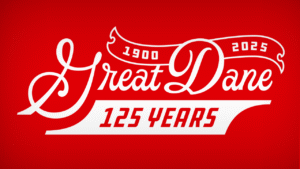Trucking capacity continued to be tight in September, with plenty of freight to haul and too few trucks to haul it. The result was another month of increasing freight rates and complaints from carriers about a lack of driver availability.
The American Trucking Associations’ (ATA) September For-Hire Truck Tonnage Index showed a 6.7% increase in September over August numbers. The ATA Index was 115.1, meaning the amount of freight reported was 15.1% higher than the baseline year of 2015. The ATA release noted that September 2020 figures were 3.3% lower than September 2019.
ATA was one of the few sources to actually record a freight decline in August, but the type of freight hauled undoubtedly had an impact. ATA members haul a lot of truckload contract freight from industrial sources, while the strength in the recent economy has been in consumer (retail) and building. The result is that smaller carriers and independents benefit more from the type of economy seen over the summer.
“The truck freight market continues to be bifurcated, with strength in retail and home construction, but some continued weakness in industrial freight,” said Bob Costello, ATA’s chief economist. “During the third quarter, truck tonnage increased 2.4% over the second quarter, but fell 5.3% from a year earlier.”
The Nov. 2 “Monday Morning Coffee” blog from FTR reported that U.S. orders for durable goods such as vehicles and appliances rose 1.9% in September. Motor vehicles and parts were a large part of the increase. Orders for durable goods have risen for five consecutive months, a good omen for trucking.
The downside of the current economy, according to the FTR blog, is continued unemployment and the uncertainty of the spread of COVID-19. Further shutdowns or restrictions can quickly reverse economic gains.
ACT Research’s For-Hire Trucking Volume Index for September rose to 70.7. The ACT Index uses 50 as a baseline; anything higher is positive or growing, and anything lower is contracting. The firm’s Pricing Index hit 71.3, a two-year high. Both are influenced by the Supply-Demand Index, which should be at 50 when supply and demand are in equilibrium. In September, they weren’t. The Supply-Demand Index was at 74.1, the tightest level since ACT started conducting the survey.
“As capacity tightened further, volume (demand) also accelerated, tightening the market balance even further from already tight levels in recent months,” said Tim Denoyer, ACT’s vice president and senior analyst.
The ACT report also monitors capacity and driver availability. Capacity came in at 46.6, indicating that there still aren’t enough trucks available. A huge reason for the dearth of trucks, however, is shown in the firm’s Driver Availability Index, which was 30.6 for September. Some drivers who were laid off or furloughed during COVID shutdowns simply haven’t returned to trucking, while numerous small trucking businesses and owner-operators have elected to park or sell their equipment due to difficult times.
An Oct. 28 press release by ACT outlined findings in the firm’s Transportation Digest, stating that motor carriers “are enjoying a period of volume growth and pricing power that would have been considered nearly impossible to achieve, though welcome, from an April 2020 vantage point.”
“While we were even then projecting a second half 2020 rebound, the slope of the upward trajectory that started in May has been as unexpected as it has been exponential,” said Kenny Vieth, ACT’s president and senior analyst.
“While severe, the 2020 recession was short-lived for some sectors of the U.S. economy, particularly transportation,” he explained. “The voluntary and mandatory shutdowns of March and April triggered a downturn of unprecedented severity, but the corresponding relaxation has brought a strong revival.”
The positive news was reflected in DAT spot pricing numbers, too. The company’s website reported that posts for spot loads have been decreasing in recent weeks, slowing the growth of spot rates, which may be lower in some areas. Those rates are still in record-setting territory, however, as DAT reports the number of available loads at double the volume available in September of 2019.
According to DAT, average van spot rates ended October at $2.41 per mile, up 4 cents from September’s $2.37. Flatbed rates showed a similar increase, ending October at $2.45 compared to September’s $2.41. Refrigerated rates increased to an average of $2.59 per mile in October, 2 cents above the September average of $2.57 per mile.
We are entering the time of year when winter weather can impact spot rates, with a strong storm system having the potential to shut down transportation, depending on where it strikes. Additionally, DAT reports record import numbers arriving at West Coast ports, expected to tighten capacity, and drive rates upward, for loads out of that area. On the refrigerated side, the “leafy vegetable” season is set to commence in Arizona and Southern California, creating rate pressure in those markets.
Finally, the national election will be over by the time this story reaches newsstands. Factors such as COVID-19 restrictions or shutdowns, fuel prices and the pace of economic growth could all be impacted by election results. How severely, and in which direction, will become evident in coming months. 8
Cliff Abbott is an experienced commercial vehicle driver and owner-operator who still holds a CDL in his home state of Alabama. In nearly 40 years in trucking, he’s been an instructor and trainer and has managed safety and recruiting operations for several carriers. Having never lost his love of the road, Cliff has written a book and hundreds of songs and has been writing for The Trucker for more than a decade.














